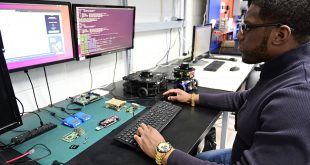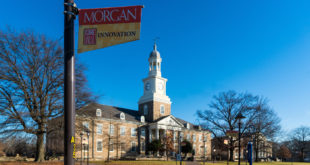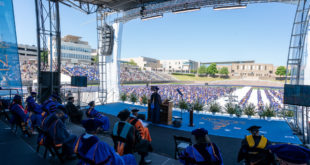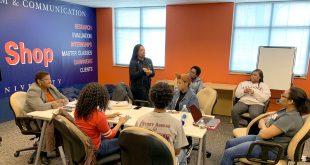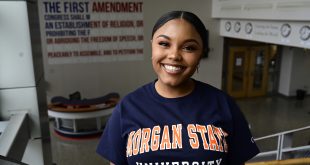For some, hearing the names Selma, Alabama or the Edmund Pettus Bridge, almost immediately invokes some of the worst images from the civil rights battles of the 1960s. However, it would be the images from one day in particular that stand out above the rest – “Bloody Sunday.”
On March 7, 1965, scores of blacks from Selma were beaten, and more were hospitalized as they peacefully marched en route to Montgomery across the Edmund Pettus Bridge in support of voting rights. Historically, it would be remembered as a turning point in the fight for equality, bringing worldwide attention to the grassroots campaign that eventually spawned passage of the 1965 Voting Rights Act.

Motivated by the 50th anniversary of that march as well as recent events happening across the nation, journalism students from Morgan’s School of Global Journalism & Communication joined with their peers from West Virginia University’s Reed College of Media to collaborate on a unique social justice reporting project to help promote a critically needed conversation about race in America. The result of this effort is “Bridging Selma,” a technology driven and engaging, journalistic look at Selma today through the prism of the past. The hope would be that the project bridges the racial divide that continues to exist in Selma – and on the campuses of many of this nation’s universities.
With the city that served as the stage for one of the most horrific incidents from the civil rights era as their classroom, and guided by faculty from both schools, the students used the written word, photos and video to tell revealing stories of the town’s past and present and to probe the community’s current economic hardships and hopes for revitalization. The culmination of the students’ work can be viewed online at bridgingselma.com.
 Professor Karen Houppert led the team from Morgan. Professor Karen Houppert led the team from Morgan. “For many of the students, it was their first time in a southern town steeped in the conflicting imagery of Confederate tradition and daunting symbols of the civil rights struggle,” said Houppert. “Through multimedia storytelling and individual narrative, “Bridging Selma” enabled students to learn about each other’s differences as well as their commonality while reporting stories that confront issues of race and social equity. These stories and their personal interaction taught them how to become part of this nation’s larger dialogue on race.”
Professor Karen Houppert led the team from Morgan. Professor Karen Houppert led the team from Morgan. “For many of the students, it was their first time in a southern town steeped in the conflicting imagery of Confederate tradition and daunting symbols of the civil rights struggle,” said Houppert. “Through multimedia storytelling and individual narrative, “Bridging Selma” enabled students to learn about each other’s differences as well as their commonality while reporting stories that confront issues of race and social equity. These stories and their personal interaction taught them how to become part of this nation’s larger dialogue on race.”
As a component of their reporting, they even experimented with virtual reality (VR) to explore perspective and the role of empathy in immersive storytelling. To support this approach, the students produced an app called “Fractured Tour” that works with VR headsets, such as Google Cardboard and Samsung VR Gear, to immerse the viewer in a virtual tour of stories. The “Fractured Tour” VR app can be downloaded through Google Play.
The idea for the project came from Morgan’s DeWayne Wickham, dean of the School of Global Journalism & Communication. His goal for the project was to bring students and faculty together from both schools to work on creating shared curricula focused on knowledge-based reporting that challenge conventional news gathering practices.
Following the success of Bridging Selma, both universities hope that this project will serve as a springboard to developing future programs that bring students from both colleges together on meaningful journalism projects that stimulate dialogue and help drive solutions to the issues dividing our communities.
 Morgan State University Newsroom Morgan State University
Morgan State University Newsroom Morgan State University

